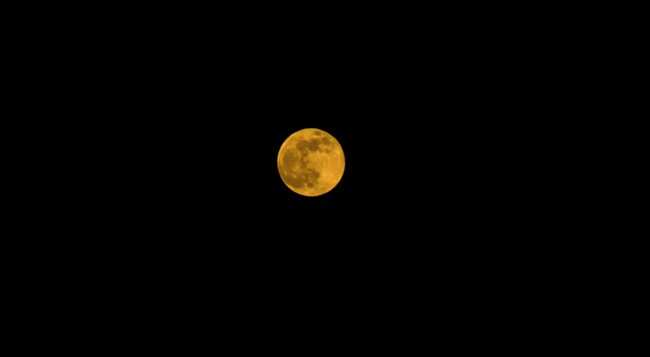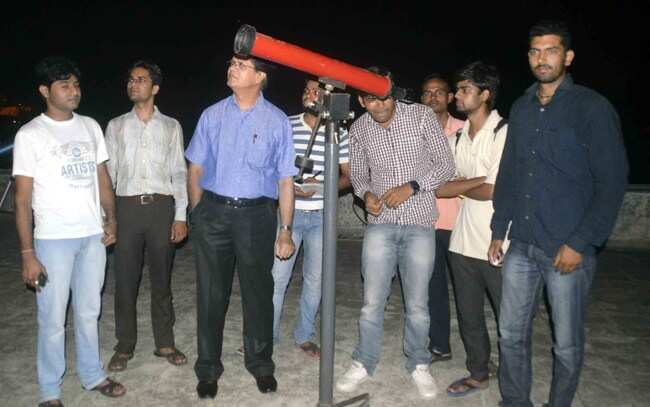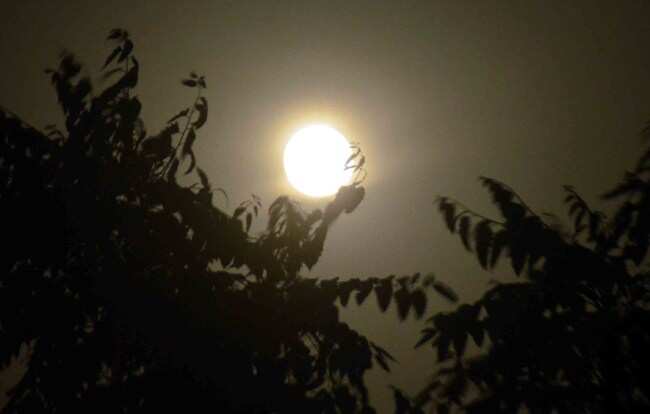The Supermoon Observed
Termed as one of the most interesting natural events to occur in the Universe, the Supermoon was witnessed today evening by a team of scientists from Mohanlal Sukhadia University. It’s called the Supermoon because the distance between the Earth and Moon decreases on certain specific dates, which makes the Moon look brighter and bigger.
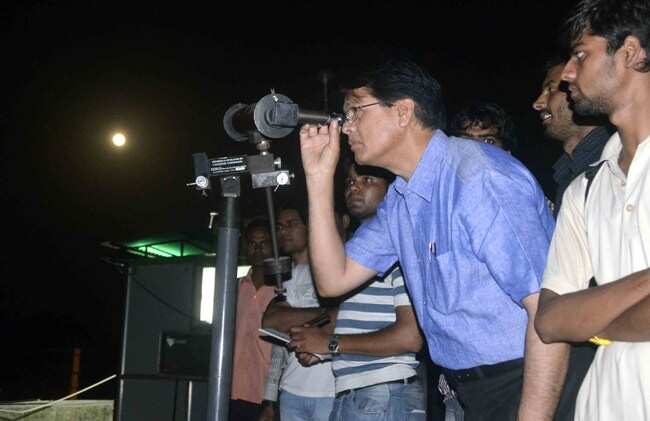
Termed as one of the most interesting natural events to occur in the Universe, the Supermoon was witnessed today evening by a team of scientists from Mohanlal Sukhadia University. It’s called the Supermoon because the distance between the Earth and Moon decreases on certain specific dates, which makes the Moon look brighter and bigger.
Professor S.N Jaffery and his team including research scholars Suryakant Joshi and Mohair had set up observation for brightness enhancement of the Supermoon for pre and post measurements at Vigyan Bhawan’s terrace.
The observation for comparative study will continue from 20th till 26th June. The team has used a 6’’ telescope with a photometer of Photon sensitivity.
Explaining more about the Supermoon, Professor Jaffery said, “the Supermoon is an interesting and routine astronomical event. The event of moon’s closest encounter with earth started from 13th June 2013 until 10th August 2014 at which time the Moon will be a scant 5 kilometers closer to Earth”.
Professor Jaffery said, “More often than not, the closest perigee of the year comes on the one day of the year, that of the full Moon. This time period is equal to about 1 year, 1 month, and 18 days. The full Moon and perigee will realign again on August 10, 2014, because it is the 14th full moon after the the 23rd June, 2013 full moon.
Following are the times, distances and dates on which the Moon is closest to Earth for it to be called Supermoon:
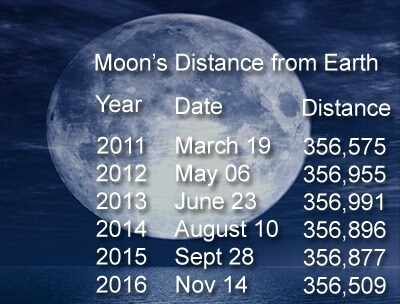 All super moons bring higher-than-usual tides, and the Perigee full Moons bring the highest (and lowest) tides of all.
All super moons bring higher-than-usual tides, and the Perigee full Moons bring the highest (and lowest) tides of all.
Each month, on the day of the full Moon, the Moon, Earth and Sun are aligned, with the Earth in between. This line up creates wide-ranging tides, known as spring tides.
High spring tides climb up especially high, and on the same day low tides plunge.
The Populations living along a coastline, watch for high tides caused by the June 23 perigee full moon – or supermoon – over the next several days.
Probably strong weather system moves into the coastline because storms do have a large potential to accentuate the spring tides.
To join us on Facebook Click Here and Subscribe to UdaipurTimes Broadcast channels on GoogleNews | Telegram | Signal



